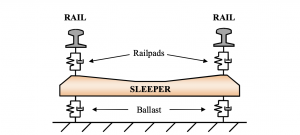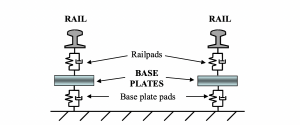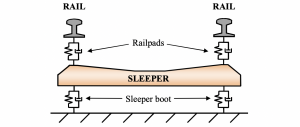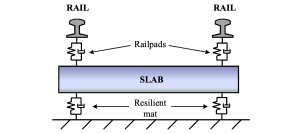The problem domain for this railway track system is the deterioration of railway track during the lifetime. The service life of rails depends especially on the operational loads and speeds on the railway lines, as well as on the rail maintenance policy 1 . A normal assumption for the system is around 60 years 2 , but individual components may have shorter life spans. At a specific point in lifetime, the system is categorized as being in a specific condition state, for the railway track, the tracks are categorized into classes 3 that ranges from best “Class 5” to worst “Class 1”, before the track goes into the “Excepted Track” category, which entails that: (1). No train shall be operated at speeds in excess of 10 miles per hour; (2) No occupied passenger train shall be operated.
Then we performed a carbon footprint analysis for the railway track, which will be considered for several design options for types of slab tracks and ballasted track. In the beginning, we would start by presenting the design alternatives. Four track types have been considered in the studies presented here: the traditional ballasted track, and three types of slab tracks: the RHEDA 2000 track, the STEDEF track, and a floating slab track:
After running the simulation, we can see that option 2 (which is the RHEDA 2000 track) provide the best results when considering all the performance indicators. Therefore, the maintenance plan of the RHEDA 2000 track is considered in this model.



